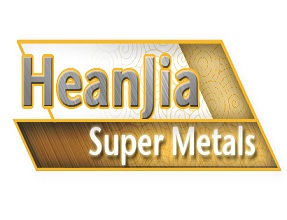You are here: home > Nichrome News > Different Types of heating wires and alloys
Product (738)
- Pure Nickel Products (38)
- Incoloy Products (74)
- Inconel Products (72)
-
FeCrAl Product
(99)

-
Nichrome Products
(68)

- Monel Products (36)
- Hastelloy Products (49)
- Nickel Iron Alloy Product (59)
-
Nickel Copper alloys
(47)

- Nonferrous Metal Product (27)
-
Resistance Wire
(90)

- Stainless Steel Product (42)
- Mesh Demister (20)
- Others (17)
Product Forms (14)
Quality Certificate (11)
Learning Gallery (30)
Incoloy News (9)
Inconel News (22)
Molybdenum News (7)
Nikrothal News (4)
Nichrome News (13)
Titanium News (2)
Nickel News (8)
Alloys House (30)
Tools (27)
Nickel alloy News (30)
Latest Buzz (30)
nickel chrome copper iron alloys news (28)
Credit Report
Products Index
Company Info
Heanjia Super-metals Co., Ltd. [China (Mainland)]
Business Type:Manufacturer, Trading Company
City: Beijing
Province/State: Beijing
Country/Region: China (Mainland)
Nichrome News
Different Types of heating wires and alloys
The most popularly used heating wires are mentioned following:
The Kanthal wire, nichrome wire and cupronickel alloy wire.
The Kanthal wire, nichrome wire and cupronickel alloy wire.
The molybdenum disilicide denoted as MoSi2 is an intermetallic alloy. The silicide of molybdenum is a refractory ceramics basically used to form the heating equipments. The compound has intermediate density, very high melting point of 2030 °C and has good conductance to current. Under the high temperatures this compound creates a passive layer of silicon dioxide to avoid the further decomposition of alloy. The molybdenum disilicide is used in the glass production, ceramic sintering, heat processing furnaces, semiconductor mixing furnaces etc. When it is mixed with aluminum or Mo(Si,Al)2, we get another refined silicide of molybdenum that is preferred as a refractory material with vital advantage in the heating equipments.
When it is used in the high temperature environments it also forms a protective layer of alumna to avoid more corrosion of compound. It has same applications like molybdenum disilicide. The combined alloy can perform up to 300 degree C and more in the reduction environment as compare to molybdenum disilicide.
The screen printed ceramic metallic tracks accumulated on the insulated ceramic metal platters. These materials have vital uses for kettles and more inhouse uses such that ceramics have been used since 1990.
Etched Foil: The etched foil materials are basically made of same alloy elements like resistance wires though these are made by following subtractive photo etching technique that begins with the regular sheet of metallic foil and finishes with the complex resistive layout. Such kinds of materials are popularly used in the precise heating operations like medical analysis and aircrafts.
The tubular is a refined coil made of nichrome resistance wire inside the ceramic insulted binder especially made of aluminum powder and sealed by a tube that is made of brass or steel. The etched foil can be a bend to span a region that is needed to heat.
The PTC ceramic material is made to achieve the positive thermal coefficient of resistance that means improvement in the resistance on heating. Several ceramics offer negative coefficient of thermal resistance. On the other side the metallic resistance increases with the increase in temperature. This level of ceramics includes lead titanate and barium titanate that offer non-uniform thermal coefficient making the alloys resistant at the composition above the threshold temperature.
This feature of ceramics enable the device to treat like a thermostat that gets cool when the current flows through it and opposes the current when it gets hot. The thin layers are utilized in the automotive rear window defrost heating device and honeycomb like materials that are used in the costly hair dryer and heating equipments.
The thick film technology for elevated temperature furnaces are usually constructed of exotic materials like platinum, molybdenum disilicide and silicon carbide. The silicon carbide is popular for using in the gas ovens.
The electric stoves introduce three kinds of heating materials, surface burners and bake materials. The surface burner elements are basically in the coil shape, solid kind or ribbon coils that are based on the heat generation by the current supply. These materials consist of nichrome resistance wire featured with superior resistance to produce large amount of heat without any loss.
Pre Page:
How to Install the new igniter
.gif)


